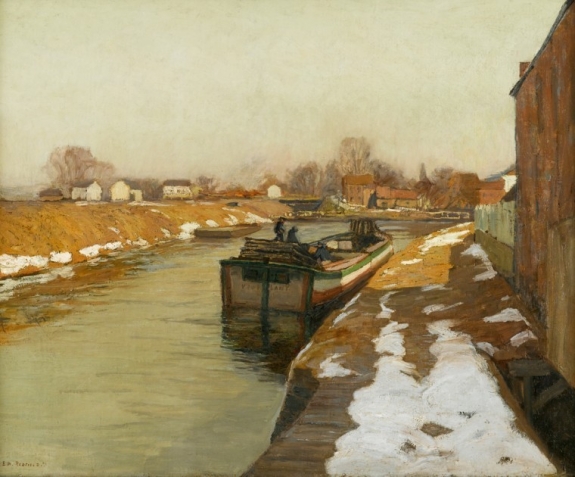Pearl S. Buck International will auction off two paintings once owned by the author to help pay for a renovation project at her former home in Hilltown.
Buck officials said it was a difficult decision to make — and in some circles, a controversial one — but was necessary in order to complete the renovation of the historic Pearl S. Buck House. The two landscapes, by well-known Pennsylvania impressionist Edward W. Redfield, are together expected to fetch up to $500,000.
“Looking at it from someone on the board who has a responsibility, if you have an asset that’s being underutilized, and you can’t see how that asset can be put back into the fold, then why do you have that asset? It’s not helping advance your mission,” said Edward Wilusz, chairman of the Pearl S. Buck International board of directors.
The money raised through the sale of the paintings will allow the organization to start the third phase of a renovation project at the house. The $1.6 million project calls for exterior and interior work, including fixing damage to trim, plaster and cabinetry in the house, repairing parts of the roof and replacing stones in outside walkways.
“These resources will be employed in the house,” Wilusz said. “It is necessary.”
The paintings, “Spring” and “The Canal at Lambertville,” were acquired by Buck herself. She knew Redfield, one of the founding members of the New Hope artists’ colony in the early 1900s, Wilusz said.
Ten years ago, when the organization realized the paintings’ value, it sent them to the James A. Michener Art Museum in Doylestown for safe-keeping, Wilusz said. They’ve been displayed at the museum only a few times since then, spending most of their time in storage. Copies hang in the Pearl Buck House.
“We have been happy to offer storage to (the paintings) over the years, because we have the facility to do so,” Michener director and CEO Bruce Katsiff said in an email. “Although it is always sad when an institution has to give something up, we completely understand Pearl S. Buck International’s decision.”
Katsiff said the sale is consistent with standards set forth by the American Association of Museums, which says the deaccession, or sale, of artwork held by museums and similar organizations should only be done to support the seller’s collection.
In the case of the Pearl Buck organization, that collection is the house, which is on the National Register of Historic Places.
“When considering an institution’s proposal or action to deaccession a work of art, one must first begin with the mission of the institution and the role played by its collections within that mission,” said Phillip Earenfight, director of The Trout Gallery at Dickinson College in Carlisle. “I can imagine instances where it would be acceptable for a historical house institution to sell paintings unrelated to the mission of the institution and use the funds to acquire collections that are central to its function.”



